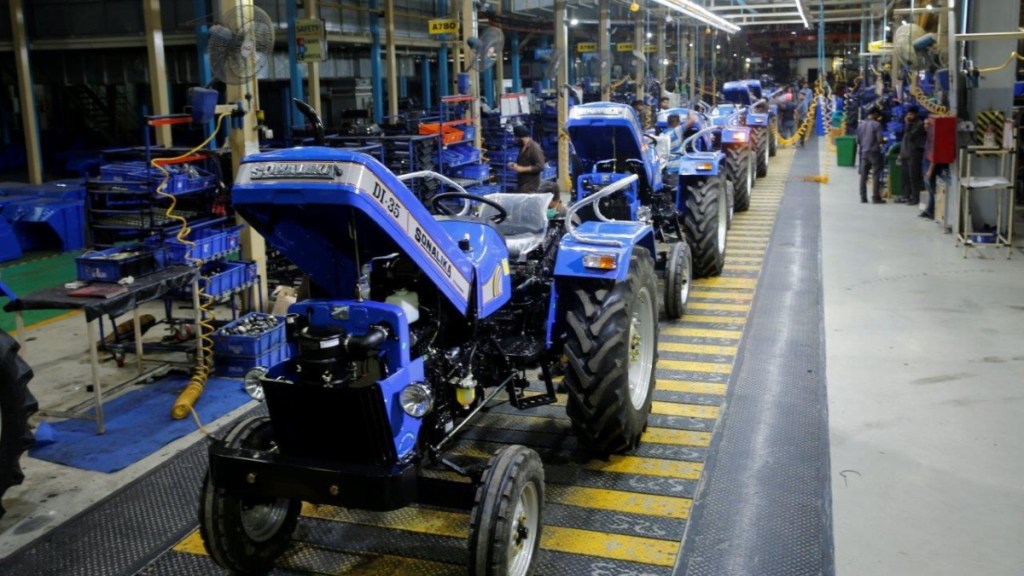Leading tractor maker, Mahindra & Mahindra, recently issued a cautious outlook for tractor sales next fiscal. In January, an average 16 percent decline was recorded on a year-on-year comparison. A total of 53,924 tractors were sold amongst the top 7 players in the country, with Kubota witnessing the biggest drop of 40 percent in wholesales YoY. Are the poster boys of the post-Covid auto industry revival losing their sheen?
Industry observers, however, don’t seem too worried yet, given the cyclical nature of the business and high base effect. If one compares the growth that the tractor industry has been clocking in the last 3-4 years, the high-base effect is also one factor that is influencing the relatively modest outlook.
Market leader Mahindra expects the tractor industry to report a negative 5 percent growth for FY2024, with Q4 seeing a higher impact than Q3 (-4%) of FY2024. Rajesh Jejurikar, Executive Director & CEO – Auto & Farm Sector, Mahindra Group told Financial Express Online that “We witnessed a slowdown in Maharashtra, Telangana, Tamil Nadu, and other parts because of the uneven rainfall distribution. A record low water reservoir level in 5 years has added to the woes of tractor makers which is already witnessing sluggish sentiments in the rural market.” He believes that the tractor market which was seeing record growth is now seeing “some correction”, but an expectation of a good monsoon, along with the government’s focus on infrastructure spend, rural spending is expected to bring back growth in the industry.
Raman Mittal, Joint MD, International Tractors is of a similar opinion. He told Financial Express Online, “The domestic tractor industry saw robust growth in FY2021 at 26.9%, however, the growth turned red in FY2022 at -6.4%. Yet again, in FY2023 it bounced back with 12.2% growth to touch 9.45 lakh domestic tractor sales, thus entering into FY2024, we had a high base year. In H1 FY’24, there were various factors leading to erratic buying patterns – uneven monsoon, El Nino effect as well as low crop yield and delayed festive season – thereby impacting overall demand for tractors. A late Kharif harvest in H2 delayed the Rabi sowing and above normal rainfall during the end-2023 may combine to further keep Rabi crop acreage at par with last year, and this will affect overall tractor sales.”
Moreover, he expects the industry to take some time, “possibly H1 FY2025, to recover.” Mittal believes that “monsoon in the next financial year along with credit availability post general elections will play an important role in shaping tractor sales growth charts.”
However, there is another interesting trend. “Farmers are now understanding that farm mechanisation is the way forward towards farm productivity and there has been a shift towards higher HP tractors. In the last 5 years, the 41-50 HP segment now constitute 54% of overall sales, up from 47% in FY23. Other factors such as increasing shortage of labour, increasing awareness among farmers for adopting implements for higher yield also contributed towards higher tractor sales in 41-50HP. Moreover, non-farm activities that constitute 30% sales are also expected to drive sales as construction activities are in full swing across India,” concluded Mittal.
Is there any reason to worry about the ongoing farmers protest and its impact? Well, Jejurikar re-assured that there has been no major impact from the farmer’s protest on tractor sales.
| Company | Jan ’24 | Jan ’23 | Change (in %) |
| Mahindra & Mahindra | 22,972 | 27,626 | -17% |
| TAFE | 9,453 | 11,375 | -17% |
| Sonalika | 7,158 | 7,581 | -6% |
| Escorts | 5,817 | 6,235 | -7% |
| John Deere | 5,454 | 6,720 | -19% |
| New Holland | 2,105 | 2,277 | -8% |
| Kubota | 965 | 1,612 | -40% |
| Total | 53,924 | 63,426 | -15% |



















